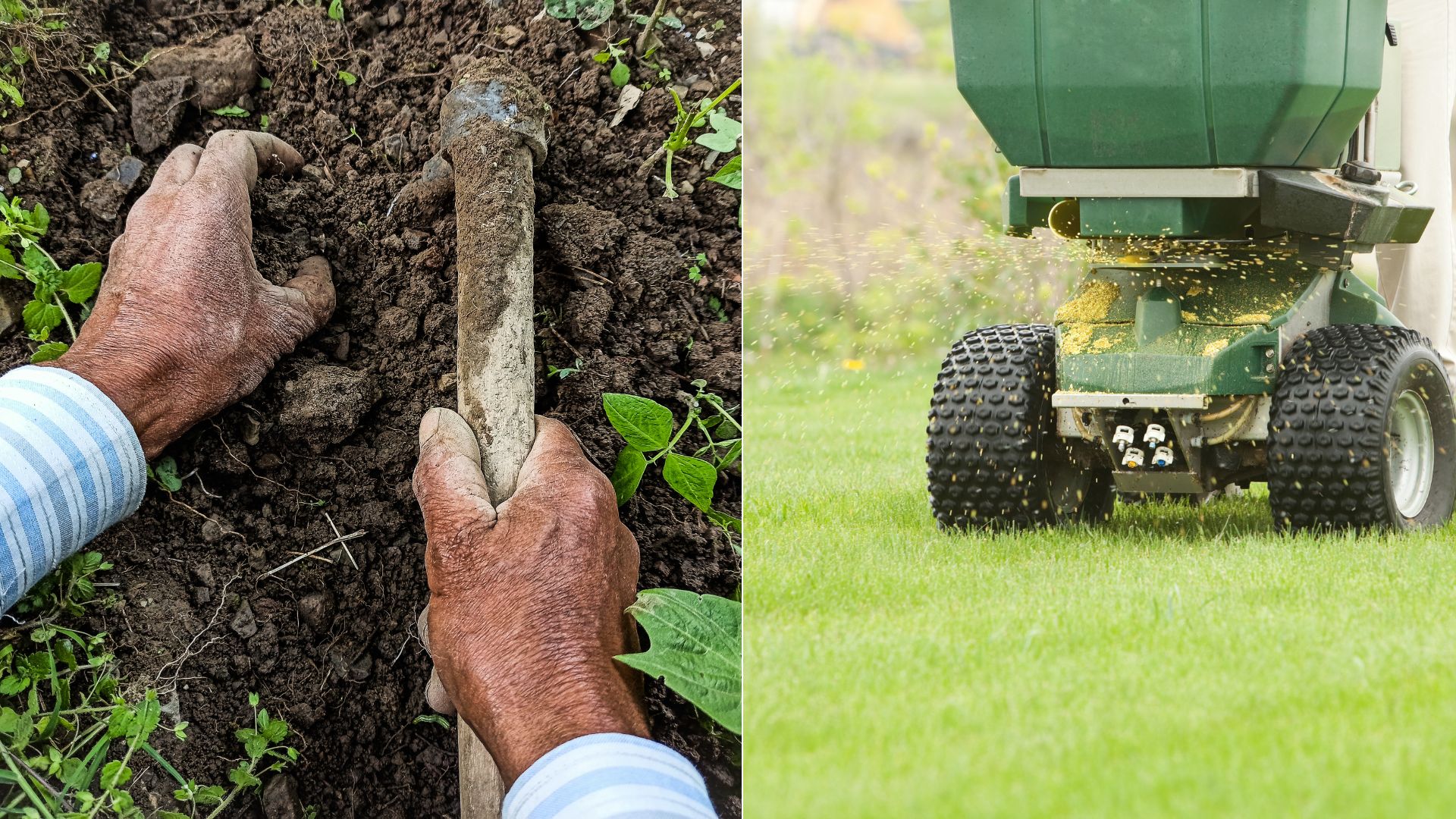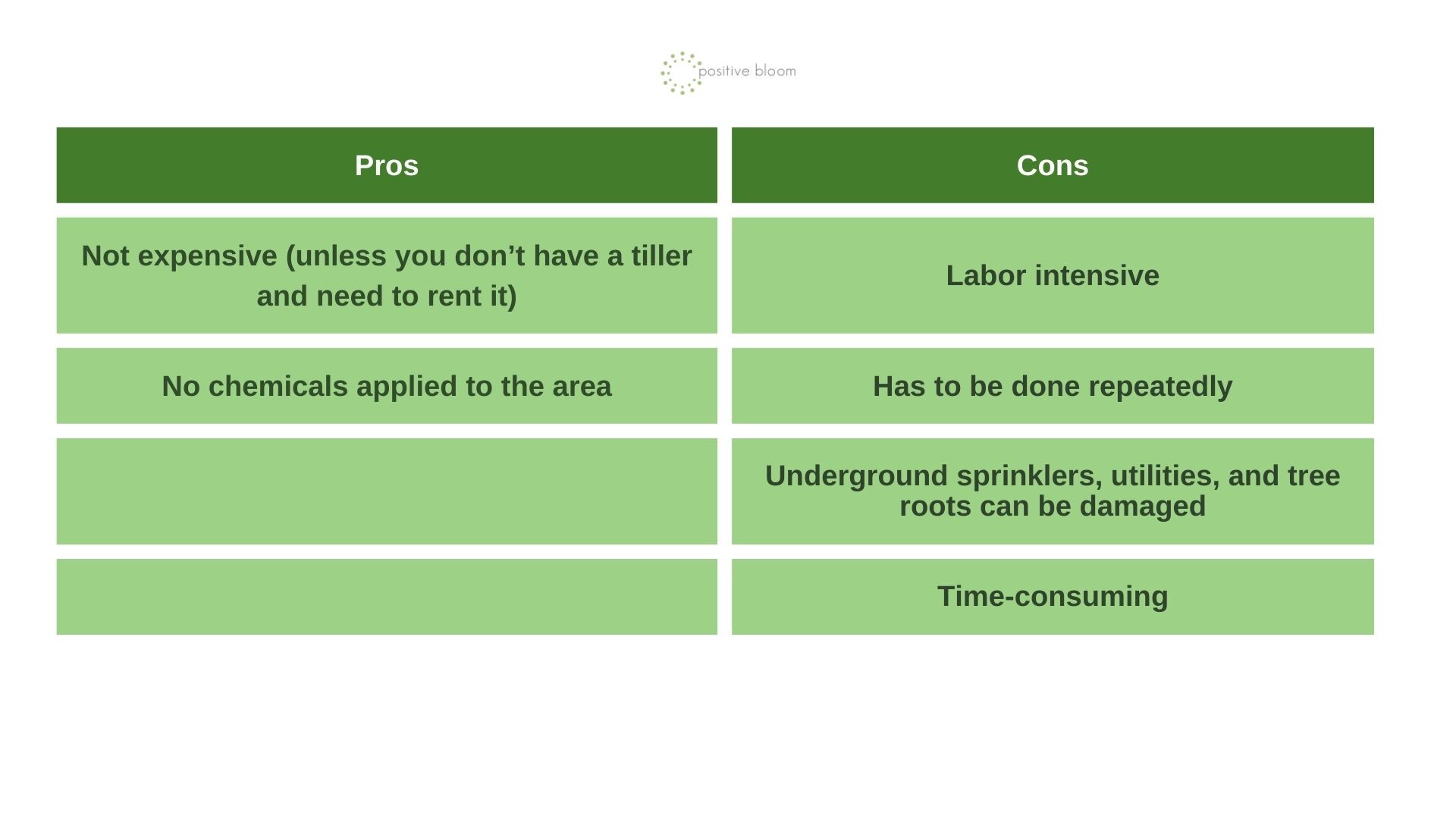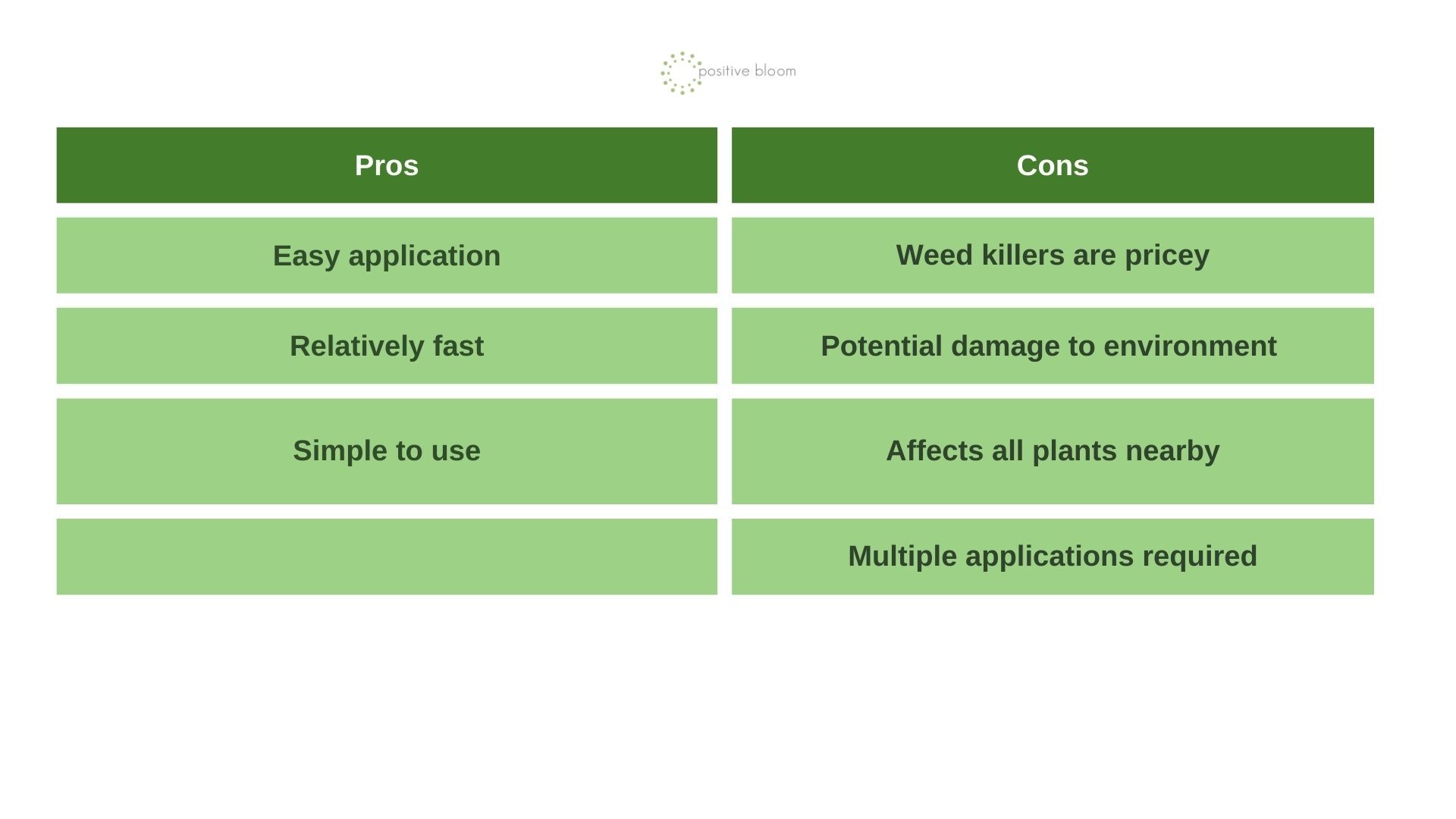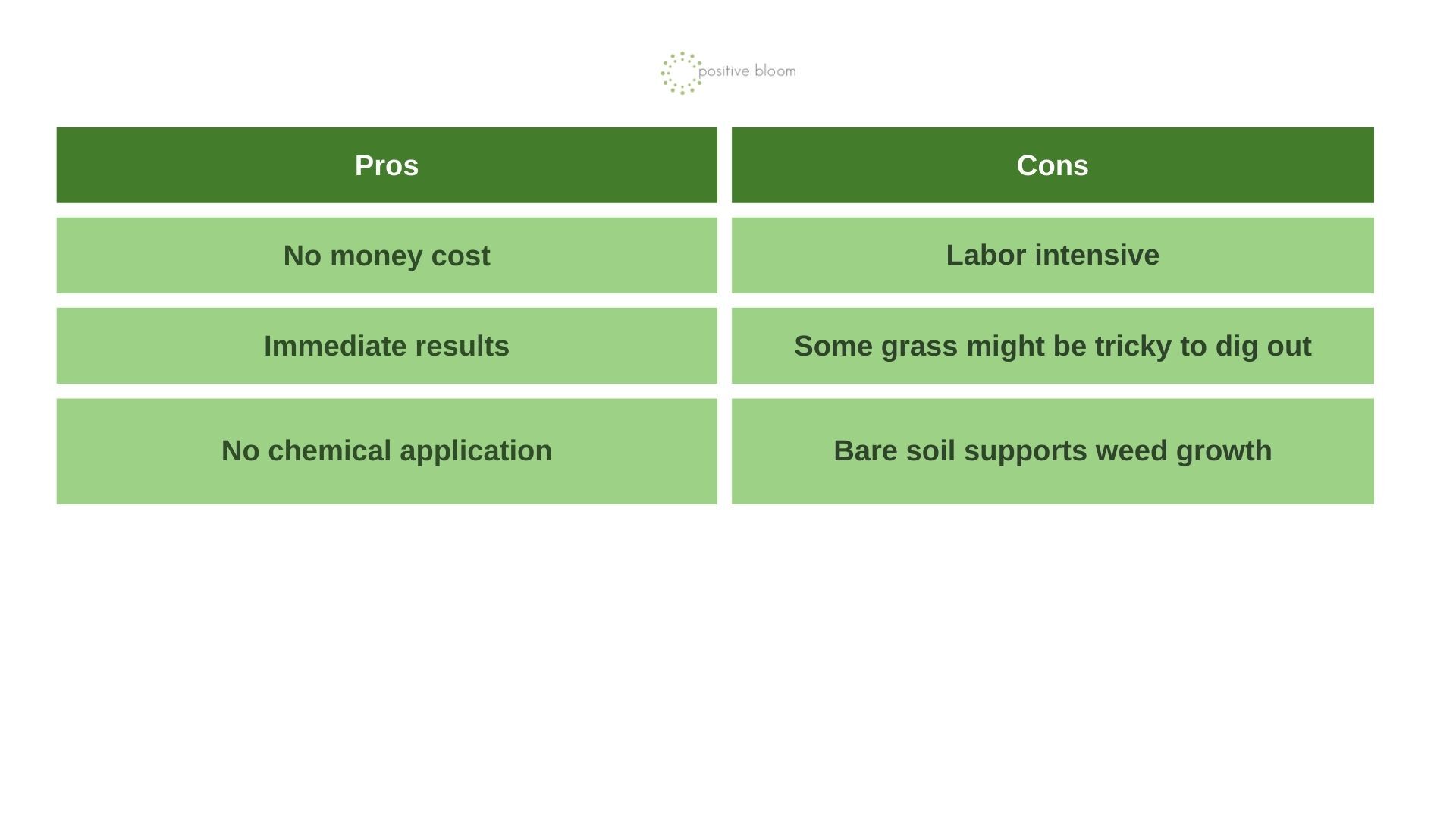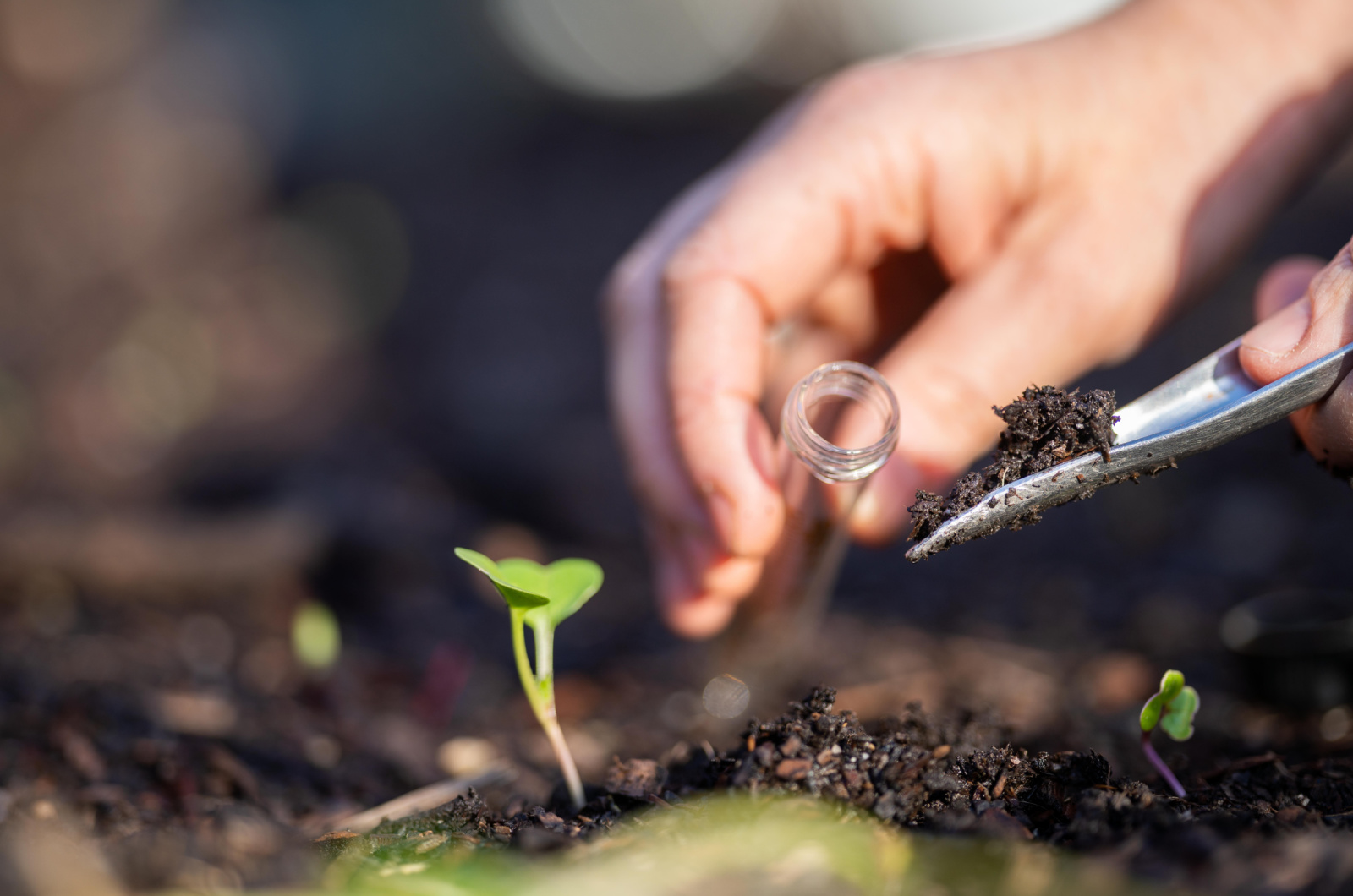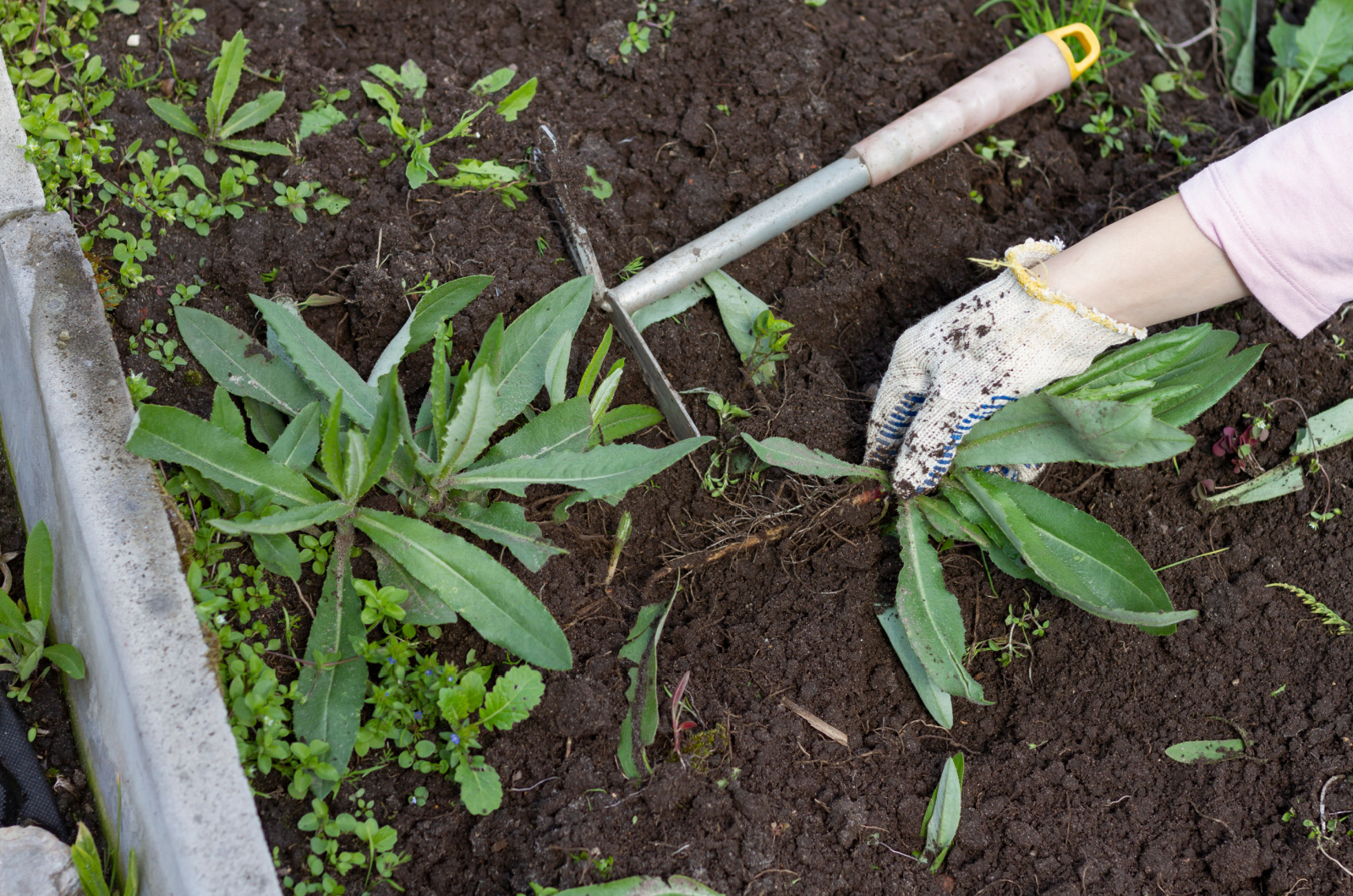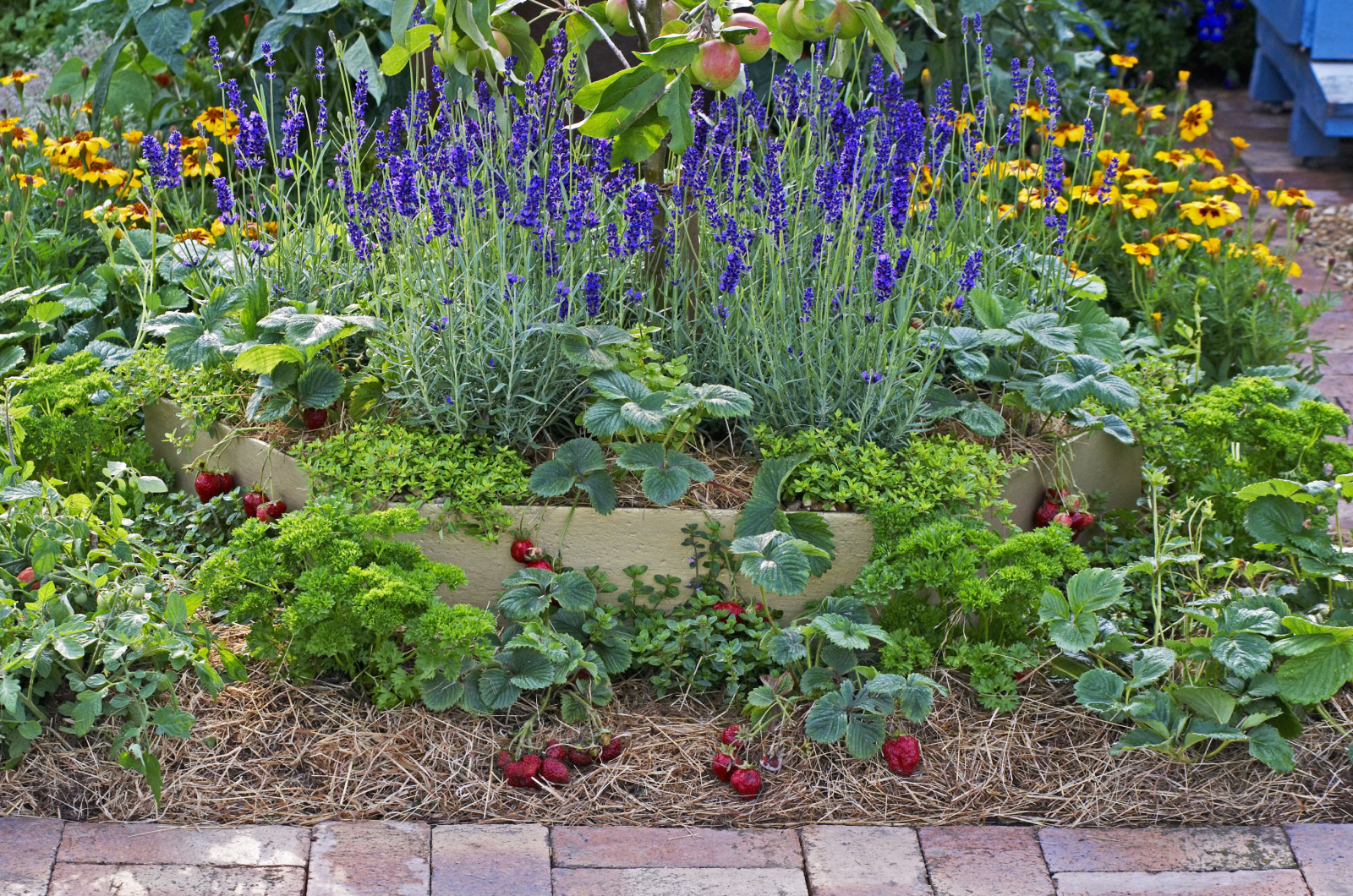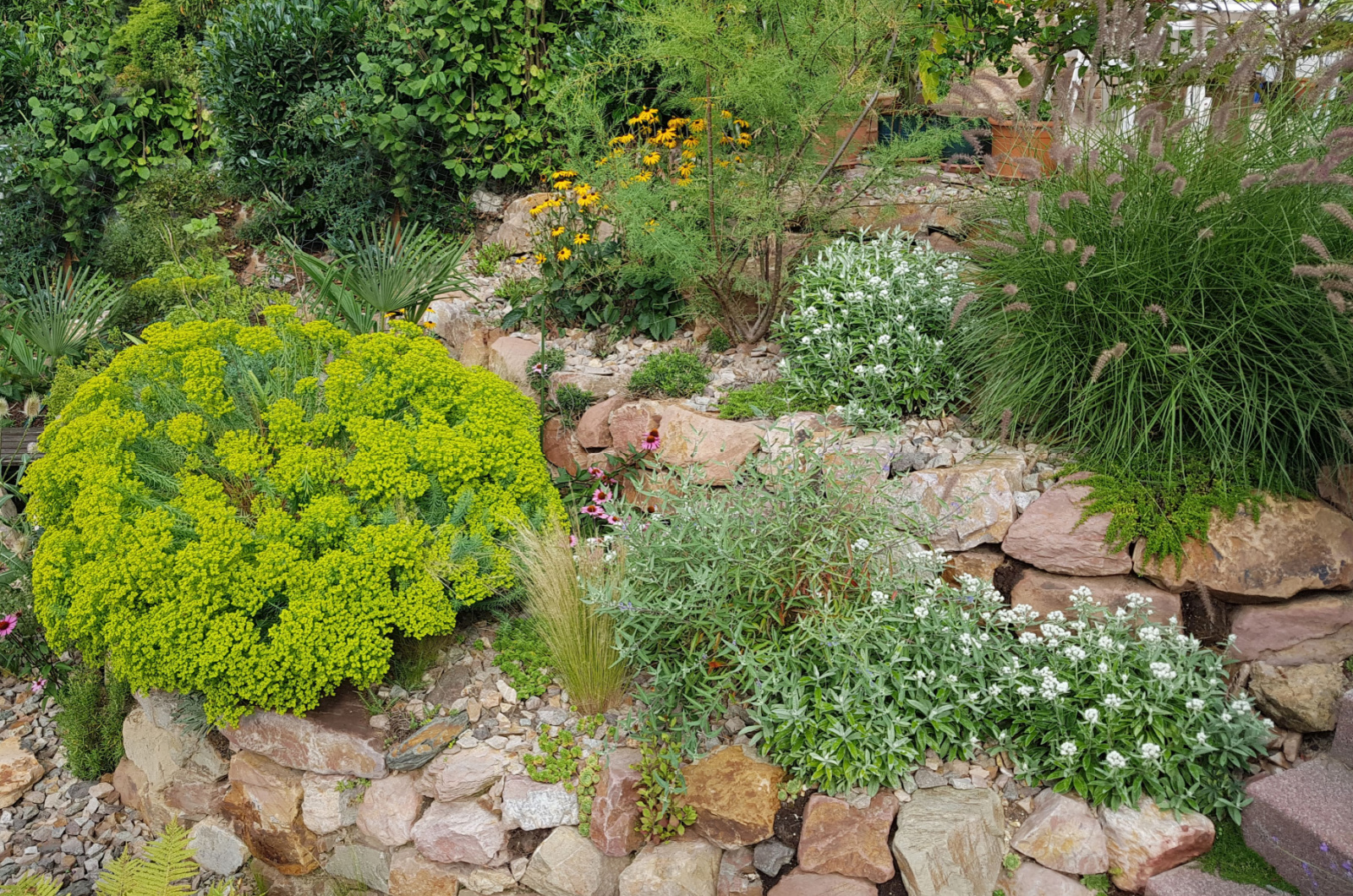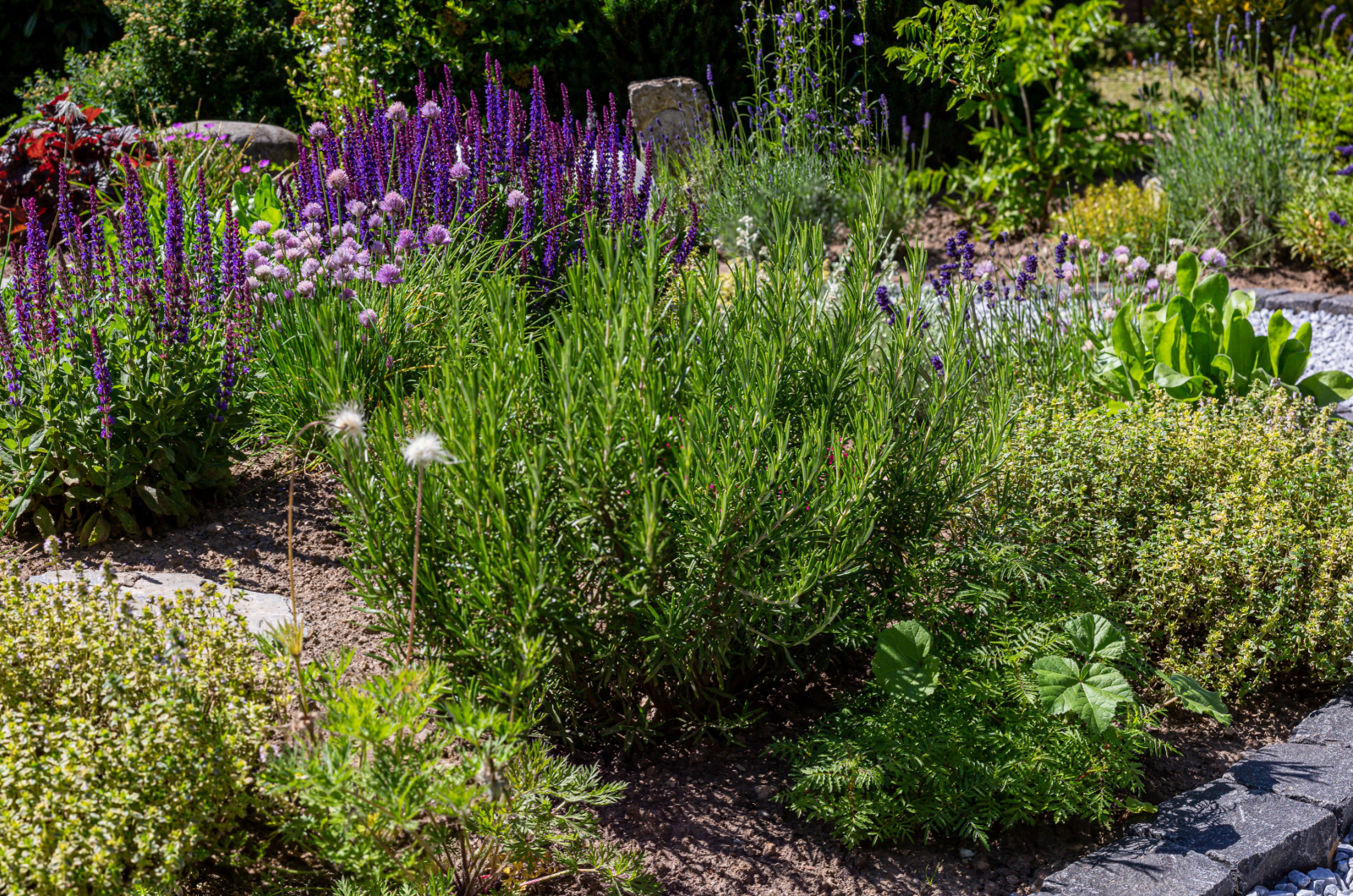Considering a lawn-free landscape? Whether you’re looking to conserve water, reduce maintenance, or create a unique garden space, removing your lawn can be a rewarding experience.
Before you get rid of your lawn, you should consider what to grow instead of a lawn, and also how much time and money can you spend on this project.
Once you’ve got it all figured out, it’s time to get your lawn removed!
In this article, we are going to cover some practical tips on how to get rid of your lawn, but also share some secrets on what to grow instead. Keep reading to find out more!
1. Tilling
The first method we will talk about is tilling. It’s great if you already have access to a tiller because you don’t have to deal with renting or hiring professionals to remove your lawn.
This tool slices through the grass and its roots, allowing you to roll up the sod and dispose of it. However, you will need to do it repeatedly so that the grass and weeds are disturbed over a long period of time.
Most grass types will eventually die overtime, although some types like Bermuda grass are quite feisty and will keep coming back no matter how many times you till your lawn. Plus, tilling can be distributed by rain and wet grounds.
It’s better to combine this technique with another, like black plastic – all you have to do is cover the area with black plastic sheets right after tilling. Always be careful not to cut your underground sprinkler system or utility lines when tilling.
2. Apply Weed Or Grass Killers
Herbicides or grass killers can effectively eliminate your lawn. However, this method requires caution to prevent damage to surrounding plants and soil. Select a product that’s suited for your specific grass type and follow the instructions carefully.
Keep in mind that this approach may take some time, especially because there are still some ungerminated weed seeds in the soil. It generally takes about two for each application to start working efficiently.
If you are interested in natural methods, check this out: Don’t Spend Money On Weed Killers, Use Vinegar Instead
3. Physically Remove Your Grass
Manual removal involves hard work, but it’s an environmentally friendly option. Plus, this is also the quickest way to remove your lawn, even though you do it section by section.
You can use a shovel, hoe, or even a rented turf cutter to dig up the grass and its roots. Luckily, most grass roots are shallow so you won’t have to dig deep. If you are dealing with a larger lawn area, consider renting a sod cutter.
Just like with tilling, you have to pay attention to underground pipes, lines, cables, and sprinkler systems that could be damaged by digging. Once you’re done, you can compost those clumps of grass – let them decompose for a longer period of time so that they don’t grow back.
4. Use Black Plastic
Solarization with black plastic is also an effective way to get rid of your lawn. Lay large sheets of black plastic over the grass, securing the edges with rocks or bricks to create a seal.
The sun’s heat gets trapped under the plastic, effectively cooking the grass and weeds beneath. This process takes about 2 to 3 months to remove the grass effectively and it works best during summer.
In some cases, tilling or digging should be considered after putting down black plastic to make sure that all grass is gone, but also to loosen up the soil and prepare it for new plants.
If you don’t want to deal with plastics, you can use a thick layer of cardboard instead. Once the fall arrives, put cardboard on the lawn and cover it with mulch and topsoil. If done correctly, you can start planting in the spring.
What To Do Next?
Now you are left with a blank space in your backyard. Before you start working on your next landscape project, there are some things you need to do to prep the area. It all comes down to soil improvement!
Soil Test
Soil tests will give you more information about the type of soil, nutrient content, pH levels, water retention, and many more useful things that can help you improve your soil. You can either look for soil tests online or call a local cooperative extension office to help you get started.
Enrich Your Soil
This is the perfect opportunity to improve the nutrient content of your soil. You can customize your soil for the exact plants you wish to cultivate – loosen up the soil and add compost or other plant food. To improve drainage, add perlite and vermiculite.
It all comes down to what type of garden you want to create!
Here are some useful tips: Improve Your Garden Soil With These 5 Simple Methods
Smooth Out The Soil
If you have tilled or physically removed the grass, you will be left with entirely bare ground. Now is the perfect time to smooth out the soil and remove all lumps and bumps that would affect new plant growth.
Pull Weeds
You may notice new weed growth on the bare area that you’ve created. The easiest option would be to simply pull out weeds as soon as they grow. But what you can also do is keep the area covered with plastic sheet or cardboard – these will prevent weed growth.
Once you’ve sown new plants, consider adding mulch to suppress weed growth. Check out these 5 Ways To Keep Weeds Out Of Flower Beds And Reduce Garden Chores.
You Can Grow This Instead Of Grass
Once the lawn is removed, you are left with empty space that has numerous possibilities!
If you still haven’t figured out what to do with it, you can pick and choose from growing a vegetable, herb and flower garden, or adding some cool rocks and creating a rock garden. The choice is yours.
Here are some ideas that might be helpful!
Edible Landscape
Consider transforming your lawn into an edible paradise. Most edible plants also have unique colors and patterns, so you can enjoy the view as much as those delicious meals you’ll be cooking with your own veggies.
Strawberries, tomatoes, peppers, corn, nasturtium, borages, blueberries, apples, and many more sun-loving plants can be grown instead of grass.
Here’s how to start a vegetable garden for free!
Pocket Prairie
If you want to have a breathtaking grassland that attracts pollinators and is also easy to take care of, consider transforming your old lawn into a pocket prairie. Opt for native grasses that can easily flourish in your regions
Mix short and tall plants to create a dramatic effect. Some of the best options include Pink Muhly grass, Purple coneflower, Wild bergamot, Common Blue violet, Blue Grama grass, and many more!
Raised Beds
Create raised garden beds for growing flowers, vegetables, or herbs. You can use raised beds even if you didn’t remove your lawn entirely. Combine multiple beds for different plants, or use one large bed for plants with similar growing requirements.
You can create tiny veggie or herb gardens in your raised beds. If you add some pollinator-attracting plants, you’ll have a miniature butterfly garden as well!
Rock Gardens
If you want to cut your water bill in half, consider creating a rock garden (also called xeriscape). Don’t worry, you will still have a thriving, green garden, but you won’t have to water it every single day.
Rock gardens use a variety of stones and drought-tolerant plants to replace grass with an eye-catching landscape that thrives with minimal watering!
Yarrow, Sea holly, different cacti varieties, snake plants, and stonecrops are just a few of the drought-tolerant plants that feature unique colors and patterns. If you want to see more examples, check these 27 Drought Tolerant Plants For The Driest Environments.
Add More Shrubs
To add some texture and visual appeal to your garden, consider growing shrubs instead of grass. These woody plants come in different shapes and sizes. They can offer privacy and protection from windbreak.
You can combine them to create borders or grow them separately as statement plants. Shrubs like azaleas and hydrangeas produce beautiful flowers with mesmerizing fragrances. They can truly make your garden look dreamy!
Blueberry bushes are also great for gardens because not only do they produce dense foliage and lovely flowers that offer privacy, but they also produce yummy berries that you can snack on.
Plus, there are some winter-flowering shrubs that can keep your garden vibrant and charming even during the colder months!
Herb Gardens
Another low-maintenance option is creating a herb garden. They are very alluring landscaping plants that exude unique fragrances which help attract pollinators and other beneficial insects. You can add them to dishes or make delicious teas.
In case you don’t want to grow a herb garden, you can always add them to your veggie garden because they won’t compete for nutrients with other plants.
But if your goal is to have a thriving herb garden, then you can combine some perennials and annuals – for instance, basil and lavender, or fennel and dill. Nonetheless, you can add many more herbs, just make sure that they are not overcrowded!
This might be helpful: 10 Effortless Herb Garden Ideas To Help Sprout Your Green Thumb
Grow Some Trees
If you have enough space, why not add some trees to your landscape?
Trees not only offer shade and beauty but also help absorb carbon dioxide from the air. Consider planting native or fruit trees to replace a section of your lawn. Opt for evergreen trees if your goal is to have year-round interest – American holly is a great choice.
However, if you want to spruce up a bit and enjoy some colors during fall, consider planting a Red maple tree. Grow a Weeping cherry tree for a beautiful flower display in spring, or an Oak tree for supporting wildlife in your local area.
Do you like waking up to the melodies of songbirds early in the morning? If so, then you should consider growing some of these trees that bring songbirds to your backyard.

